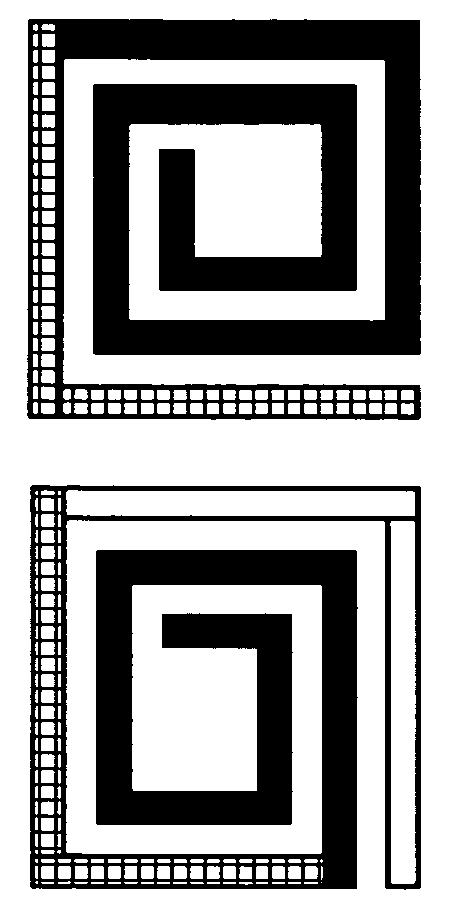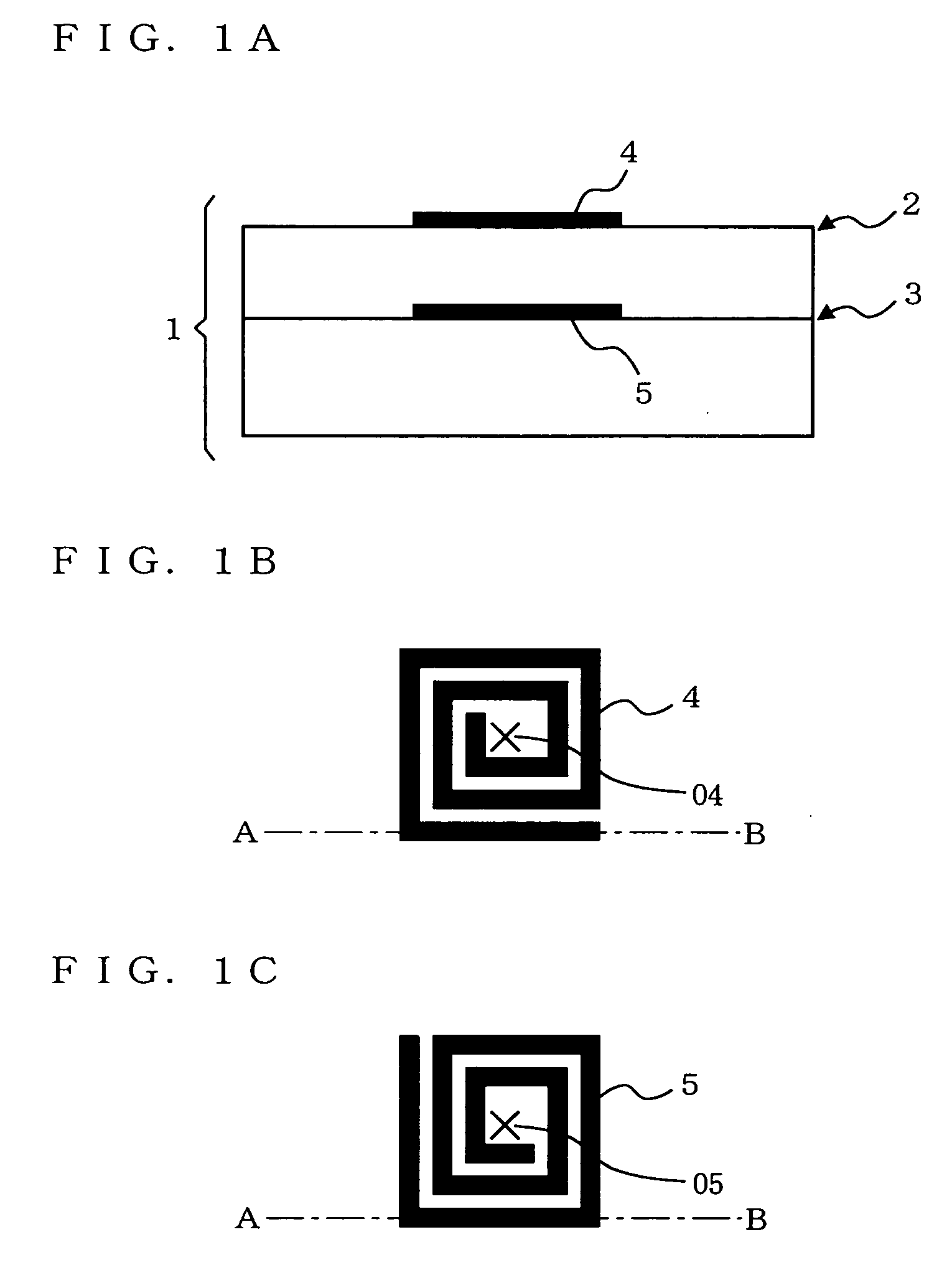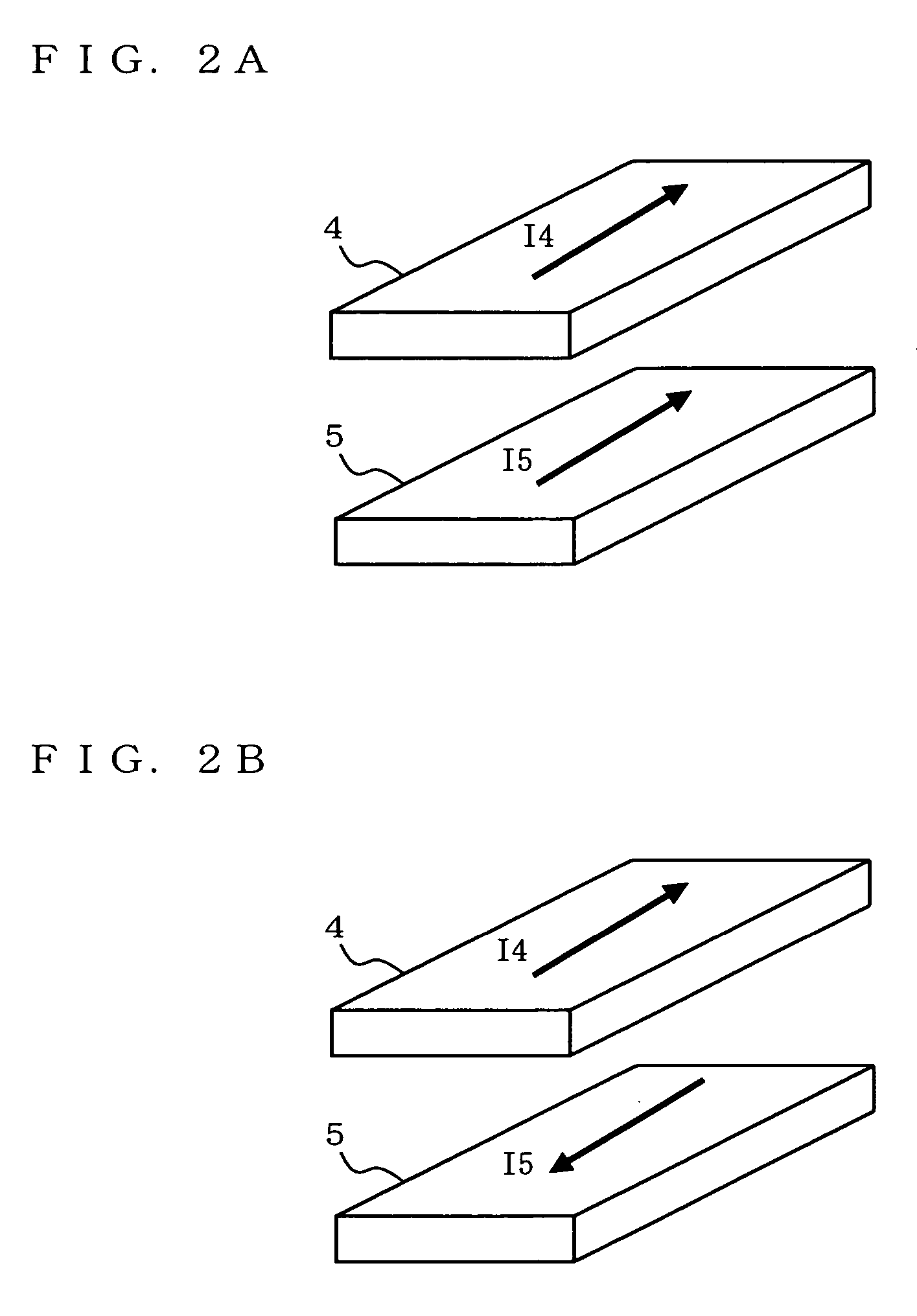High-frequency circuit
a high-frequency circuit and circuit technology, applied in the direction of transformer/inductance details, coils, resonators, etc., can solve the problems of high cost, unrealistic improvement of strip formation precision, and inability to meet the requirements of high-frequency circuits, so as to reduce resonance frequency, broad-band filter characteristics, and energy transmission efficiency
- Summary
- Abstract
- Description
- Claims
- Application Information
AI Technical Summary
Benefits of technology
Problems solved by technology
Method used
Image
Examples
first embodiment
[0105] (First Embodiment)
[0106]FIG. 1A is a schematic cross-sectional view showing a high-frequency circuit according to a first embodiment of the present invention taken along line AB in FIGS. 1B and 1C. The high-frequency circuit according to the present embodiment is formed on a multilayered dielectric substrate 1 which has two conductive circuit layers. FIG. 1B is an upper plan view showing a pattern of a spiral conductive strip 4 which is formed on an outermost surface 2 of an upper conductive circuit layer in the multilayered dielectric substrate 1. FIG. 1C is an upper plan view showing a pattern of a spiral conductive strip 5 formed on an interface 3 of a lower conductive circuit layer in the multilayered dielectric substrate 1.
[0107] In the high-frequency circuit according to the first embodiment, the spiral conductive strip 4 is formed on the surface of an uppermost conductive circuit layer in the multilayered dielectric substrate 1 and the spiral conductive strip 5 is for...
second embodiment
[0123] (Second Embodiment)
[0124]FIG. 9A is a schematic cross-sectional view showing a high-frequency circuit according to a second embodiment of the present invention taken along line CD in FIGS. 9B, 9C, and 9D. The high-frequency circuit according to the present invention is formed on a multilayered dielectric substrate 1 which has three dielectric circuit layers. FIG. 9B is an upper plan view showing a pattern of a spiral conductive strip 4 which is formed on an outermost surface 2 of an uppermost conductive circuit layer in the multilayered dielectric substrate 1. FIG. 9C is an upper plan view showing a pattern of a spiral conductive strip 5 formed on an interface 3 of an intermediate conductive circuit layer in the multilayered dielectric substrate 1. FIG. 9D is an upper plan view showing a pattern of a spiral conductive strip 9 formed on an interface 8 of a lowermost conductive circuit layer in the multilayered dielectric substrate 1.
[0125] If the outermost surface 2, the inte...
third embodiment
[0132] (Third Embodiment)
[0133]FIG. 10A is a schematic cross-sectional view showing a high-frequency circuit according to a third embodiment of the present invention taken along line EF in FIGS. 10B and 10C. The high-frequency circuit according to the third embodiment is formed on a multilayered dielectric substrate 1 which has two dielectric circuit layers. FIG. 10B is an upper plan view showing patterns of a spiral conductive strip 4 and an input / output line 12 which are formed on an outermost surface 2 of an upper conductive circuit layer in the multilayered dielectric substrate 1. FIG. 10C is an upper plan view showing a pattern of a spiral conductive strip 5 formed on an interface 3 of a lower conductive circuit layer in the multilayered dielectric substrate 1.
[0134] As in the case of the first embodiment, point 04 shown in FIG. 10B and point O5 shown in FIG. 10C are in identical positions within each plane. The layered spiral conductive strips 4 and 5 together compose a stack...
PUM
| Property | Measurement | Unit |
|---|---|---|
| resonance frequency | aaaaa | aaaaa |
| length | aaaaa | aaaaa |
| dielectric constant | aaaaa | aaaaa |
Abstract
Description
Claims
Application Information
 Login to View More
Login to View More - R&D
- Intellectual Property
- Life Sciences
- Materials
- Tech Scout
- Unparalleled Data Quality
- Higher Quality Content
- 60% Fewer Hallucinations
Browse by: Latest US Patents, China's latest patents, Technical Efficacy Thesaurus, Application Domain, Technology Topic, Popular Technical Reports.
© 2025 PatSnap. All rights reserved.Legal|Privacy policy|Modern Slavery Act Transparency Statement|Sitemap|About US| Contact US: help@patsnap.com



